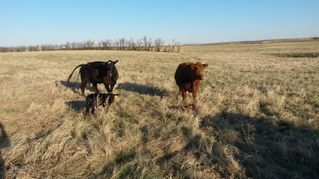

Bale Grazing Dos and Don'ts
If you’re going to be feeding your livestock this winter, bale grazing could be right for you. It can save you time and money and even...


Let Cattle do the Seeding
Cattle can be managed to produce calves, beef and milk, but can they also be put to work re-seeding pastures? The palatable black seed...


Is it Time to Start Early Evening Feeding?
It is generally accepted that adequate supervision at calving has a significant impact on reducing calf mortality. Adequate supervision...


Reproduction & Grazing Were Designed for Each Other
For optimum energy utilization, the cows' reproductive cycle should coincide with the grass production cycle A study from the United...


Dung Beetles Found to Reduce Survival of Livestock Parasites
Scientists from the University of Bristol have found that dung beetles can help farmers by reducing the development and survival of...


Grid-Tie Solar Options: What Makes it Different?
What is Grid-Tie Solar? It is becoming increasingly profitable for Albertans to generate their own electricity and sell it to the grid,...


Canada Thistle Mining Weevils: A Hopeful Biocontrol?
What if we could control Canada thistle without the use of herbicides that destroy our mixed legume and alfalfa stands? And more...


How to Tell Your Farm Story using Social Media
We Are Our Own Gatekeepers Just a decade ago, the media was dominated by a few (very loud) voices. We watched the TV news at 5 p.m. and...























































